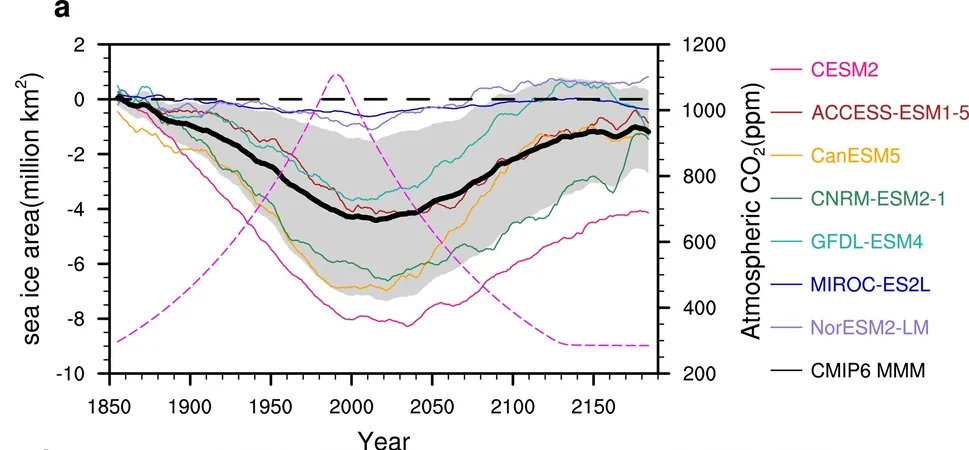
Can We Save Antarctic Sea Ice? New Study Reveals Key Factors!
2025-09-21
Author: Arjun
Antarctic Sea Ice in Crisis!
Since 2014, satellite data has shown a dramatic decline in Antarctic sea ice, particularly in recent years. A groundbreaking study published in *Geophysical Research Letters* reveals that reversing this trend may hinge on more than just our carbon dioxide emissions—it also depends critically on the layering of the Southern Ocean.
The Hidden Influence of Ocean Stratification
Researchers, led by Sirui Li from the Ocean University of China, discovered that the initial thickness and stability of ocean layers play a crucial role in whether Antarctic sea ice can bounce back. When the ocean's stratification is strong, warmer water remains trapped below colder surface layers, preventing ice from forming and even causing existing ice to melt from beneath.
Climate Models and Future Projections
The team conducted climate model experiments using the Coupled Model Intercomparison Project Phase 6, simulating potential future carbon dioxide levels. Their goal was to determine under what conditions the decline in Antarctic sea ice can be reversed. They found that stronger initial stratification led to greater heat retention at the surface, accelerating ice melt and creating a vicious cycle of further ice loss, even if emissions were curtailed later.
A Bleak Outlook for Recovery
By 2129, even if carbon dioxide levels revert to pre-Industrial levels, the sea ice area could still be significantly reduced—by approximately 1.4 million square kilometers. This highlights the concerning tendency of Antarctic sea ice to lag behind changes in greenhouse gas levels, suggesting that heat absorption by the ocean continues long after emissions taper off.
Hope Among the Challenges
Conversely, if the ocean's stratification is weaker initially, there’s potential for recovery under certain emissions reduction scenarios. In this case, heat mixes deeper into the ocean, allowing surface waters to cool and fostering ice formation.
The Stakes Are High
The fate of Antarctic sea ice isn't just about ice; it has far-reaching implications for our global climate, ocean circulation, ecosystems, and even sea level rise. More open water leads to increased solar absorption, exacerbating ice melt and contributing to rising sea levels. Moreover, melting ice threatens specialized ecosystems that rely on this icy habitat.
A Call for Action
To bolster predictions and better understand stratification dynamics, the researchers urge enhanced monitoring of subsurface temperatures, salinity, and other factors influencing ocean layers around Antarctica. They advocate for a more detailed examination of ice melt, wind patterns, and ocean-atmosphere interactions to refine models crucial for climate planning.
Time Is of the Essence
Ultimately, the researchers convey a message of cautious optimism: the reversibility of sea ice loss is possible, but it is imperative that we take significant action on carbon dioxide emissions sooner rather than later. Stabilizing stratification layers is essential for protecting our planet's icy regions.





 Brasil (PT)
Brasil (PT)
 Canada (EN)
Canada (EN)
 Chile (ES)
Chile (ES)
 Česko (CS)
Česko (CS)
 대한민국 (KO)
대한민국 (KO)
 España (ES)
España (ES)
 France (FR)
France (FR)
 Hong Kong (EN)
Hong Kong (EN)
 Italia (IT)
Italia (IT)
 日本 (JA)
日本 (JA)
 Magyarország (HU)
Magyarország (HU)
 Norge (NO)
Norge (NO)
 Polska (PL)
Polska (PL)
 Schweiz (DE)
Schweiz (DE)
 Singapore (EN)
Singapore (EN)
 Sverige (SV)
Sverige (SV)
 Suomi (FI)
Suomi (FI)
 Türkiye (TR)
Türkiye (TR)
 الإمارات العربية المتحدة (AR)
الإمارات العربية المتحدة (AR)